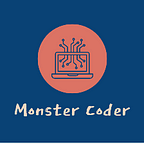Golang: Creating Images and Drawing — Simply Explained (Part 1)
Let your right brain work with your left to unleash your artistic talent
Understanding the key elements of the framework
Golang is useful and oft mentioned for it’s web development functions. So let’s take sometime to understand the components of the imaging framework to get the lay of the land.
Interface image.Image
The interface is what you need to know first. Any types in Golang can be said to follow the image.Image interface if it implements:
- Function that returns a color model — this color model is how the data translating to pixels are stored in binary format;
- Function that returns the bounding rectangle — this represents the size of the rectangle that forms the bounding geometry of the image; and
- Function that returns the color.Color at the input x and y integer coordinates.
type Image interface {
ColorModel() color.Model
Bounds() Rectangle
At(x, y int) color.Color
}Interface draw.Image
The image.Image interface with the At function is like a read only image. It can only tell you the color at each coordinate of the pixel. What if we want to create an image. That’s where the interface draw.Image comes in under the image/draw package.
type Image interface {
image.Image
Set(x, y int, c color.Color)
}As the official documents say, the draw.Image interface is a image.Image interface with a Set function to set the color for a particular x and y pixel coordinate. Obviously this is required for your to draw on the image.
The above are two interfaces, but to those familar with Golang, you would know that we need structures to be implementing these interfaces. So let’s look at the supporting structs.
Actual Structs
The structs that support the two aforementioned interfaces are listed below:
- Gray —8-bit greyscale
- Gray16– 16–bit greyscale
- CMYK
- Paletted
- RGBA — most commonly know color model of red, green, blue and alpha channels, each 8 bits
- NRGBA — non-alpha-premultiplied 32-bit color (each channel is 8-bit)
- NRGBA64 — non-alpha-premultiplied 64-bit color (each channel is 16-bit)
- NYCbCrA — non-alpha-premultiplied Y’CbCr-with-alpha (8-bit for each of Luma and the two chroma components; JPEG, VP8, MPEG codecs etc use this color model)
- Alpha — a single channel (alpha) 8-bit
- Alpha16 — a single channel (alpha) 16-bit
It’s important to say that if you read the documentation, it’s the pointers of the structs that conform to the two interfaces.
Now that I know about the structs, but how do you get the structs then?
We have to look at packages such as image/jpeg and image/png etc. These are packages that allow you to open say a jpeg image file and Decode the file into image.Image instances. Example code below:
import _ "image/jpeg" //will call the init() function of the package
//thus enabling working with jpeg filefunc OpenImage(path string) (image.Image, error) {
f, err := os.Open(path)
if err != nil {
fmt.Println(err)
return nil, err
}
defer f.Close()img, format, err := image.Decode(f)
if err != nil {
e := fmt.Errorf("error in decoding: %w", err)
return nil, e
}if format != "jpeg" && format != "png" {
e := fmt.Errorf("error in image format - not jpeg")
return nil, e
}return img, nil
}
If you want to manipulate the image, yes, then you need to get the color.Color at each pixel. Here is sample code to extract the color.Color that represents each pixels and storing them into a color tensor [][]color.Color.
func GetImageTensor(img image.Image) (pixels [][]color.Color) {
size := img.Bounds().Size()
for i := 0; i < size.X; i++ {
var y []color.Color
for j := 0; j < size.Y; j++ {
y = append(y, img.At(i, j))
}
pixels = append(pixels, y) // 2 by 2 slices where
//each contains a color.color
}
return
}Then with the color tensor, we can manipulate individual color at each pixel in the RGBA format and store then as a image.RGBA struct whose pointer form implements the image.Image interface.
func ConvertGreyScale(pixels *[][]color.Color) image.Image { p := *pixels
wg := sync.WaitGroup{}
rect := image.Rect(0, 0, len(p), len(p[0]))
newImage := image.NewRGBA(rect)
for x := 0; x < len(p); x++ {
for y := 0; y < len(p[0]); y++ {
wg.Add(1)
go func(x, y int) {
pix := p[x][y]
originalColor, ok := color.RGBAModel.Convert(pix).(color.RGBA)
if !ok {
log.Fatalf("color.color conversion went wrong")
}
grey := uint8(float64(originalColor.R)*0.21 + float64(originalColor.G)*0.72 + float64(originalColor.B)*0.07)
col := color.RGBA{
grey,
grey,
grey,
originalColor.A,
}
newImage.Set(x, y, col) wg.Done()
}(x, y)
}
}
return newImage
}
Note that image/color package in the standard library includes function that is able to convert the colors from one format to another e.g. func CMYKToRGB(c, m, y, k uint8) (uint8, uint8, uint8).
Now you would know enough to read a jpeg file and how to manipulate the color of each pixels. Let’s pause here. In part 2, I will talk about basic drawing, which is where draw.Image comes into play.
Happy Golang coding.
